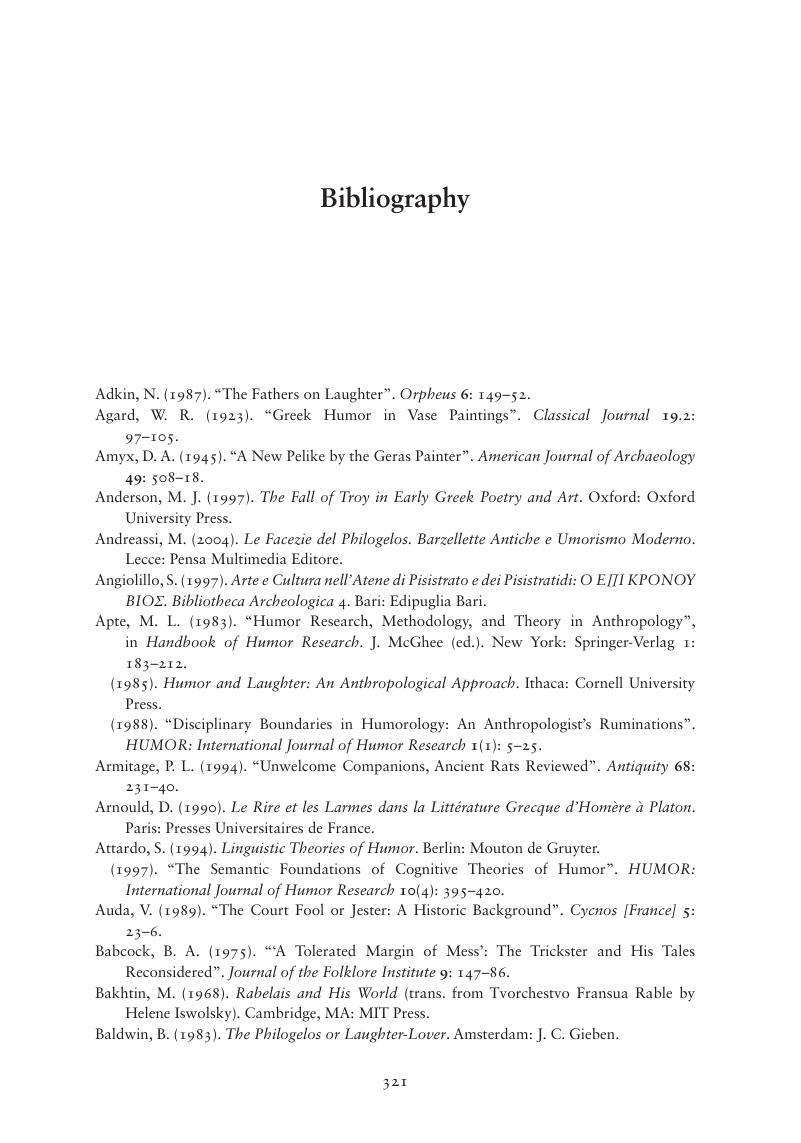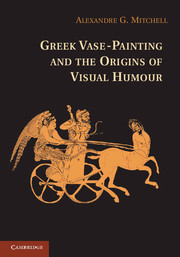Book contents
- Frontmatter
- Epigraph
- Contents
- List of Illustrations
- List of Tables
- Preface
- Acknowledgements
- Abbreviations
- GREEK VASE-PAINTING AND THEORIGINS OF VISUAL HUMOUR
- One Introduction
- Two Humour in the City
- Three Humour in the City
- Four Satyrs and Comic Parody
- Five Caricatures inAthens and at the Kabirion Sanctuary in Boeotia
- Six Conclusion
- Glossary
- Bibliography
- Index of Vases Cited in the Text
- General Index
- References
Bibliography
Published online by Cambridge University Press: 05 January 2014
- Frontmatter
- Epigraph
- Contents
- List of Illustrations
- List of Tables
- Preface
- Acknowledgements
- Abbreviations
- GREEK VASE-PAINTING AND THEORIGINS OF VISUAL HUMOUR
- One Introduction
- Two Humour in the City
- Three Humour in the City
- Four Satyrs and Comic Parody
- Five Caricatures inAthens and at the Kabirion Sanctuary in Boeotia
- Six Conclusion
- Glossary
- Bibliography
- Index of Vases Cited in the Text
- General Index
- References
Summary

- Type
- Chapter
- Information
- Greek Vase-Painting and the Origins of Visual Humour , pp. 321 - 344Publisher: Cambridge University PressPrint publication year: 2009

